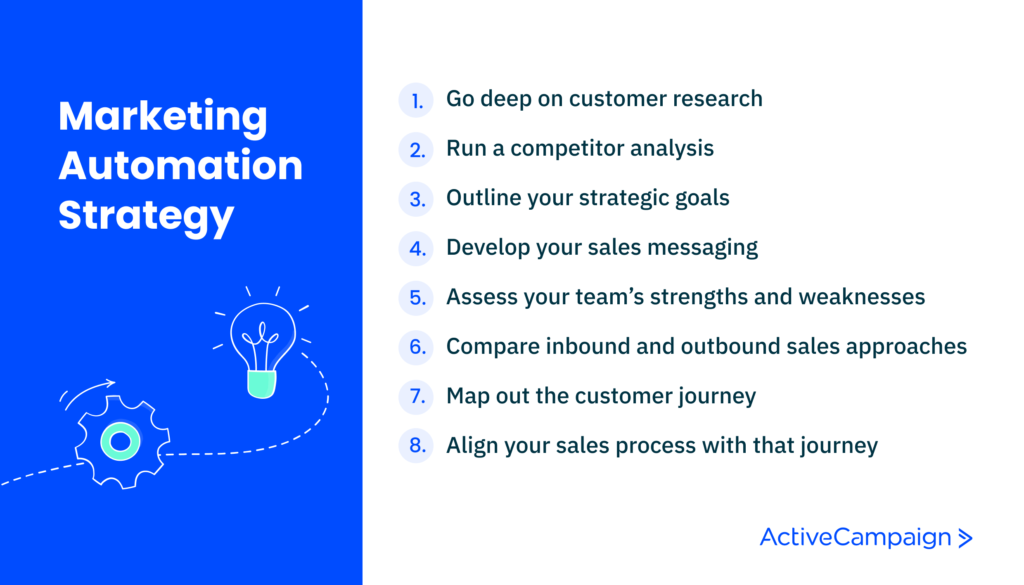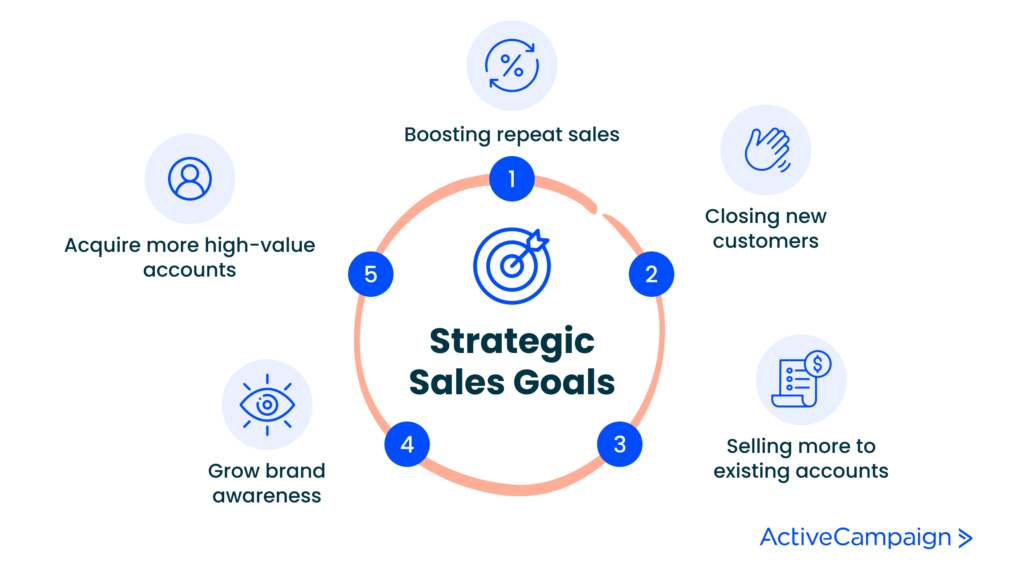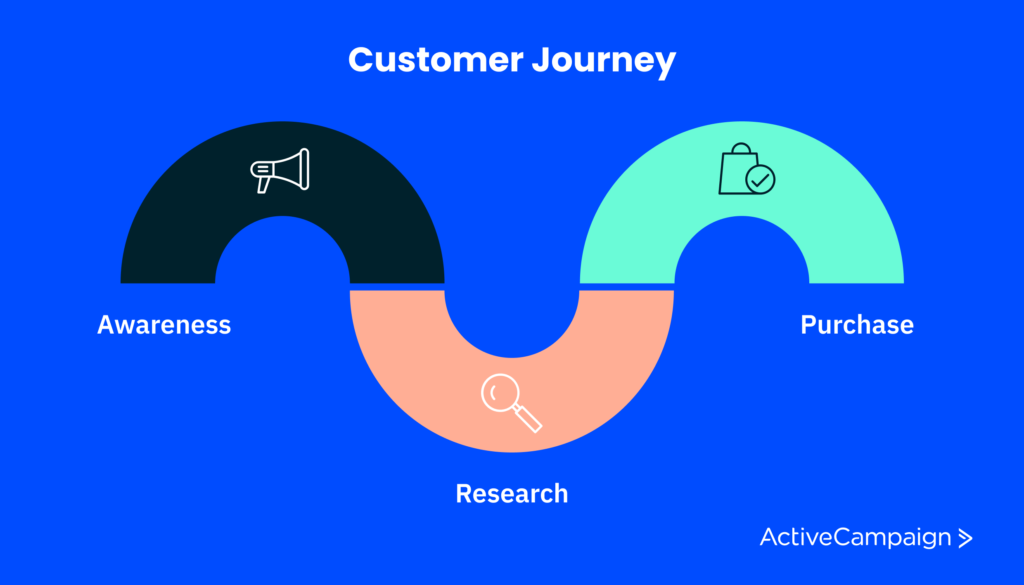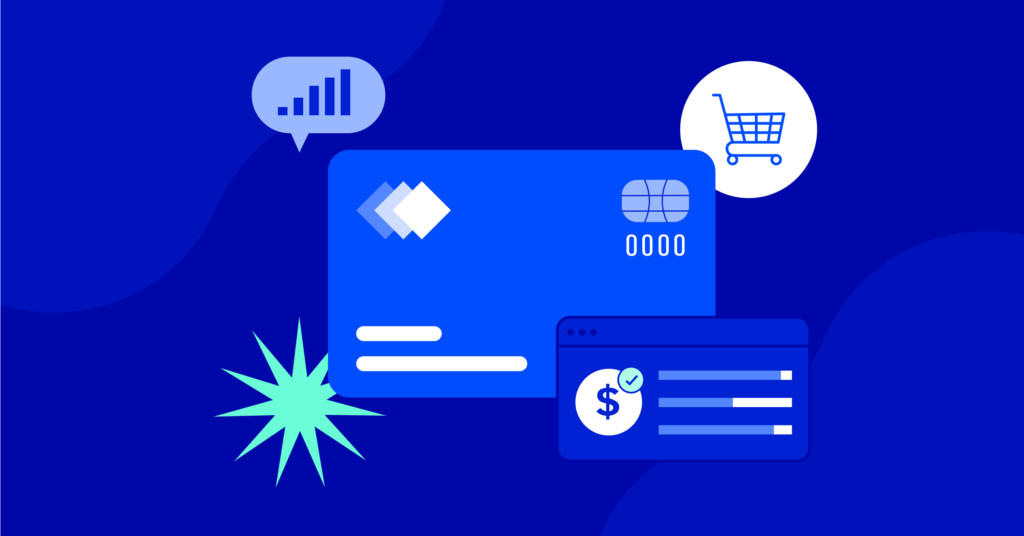No products in the cart.
Email Marketing
How To Build A Sales Strategy In 8 Steps
Very few organizations don’t have a goal of boosting sales.
It’s pretty much imperative. To keep growing your company, you’ve got to have revenue flowing in, which comes from new or repeat sales.
Straightforward, but unfortunately, many sales teams take this to mean they simply need to work harder at what they’re doing.
Sometimes, however, what they’re doing currently just isn’t sufficient, and that’s often because they lack the strategic direction to empower their team to speak with the right types of customers using the right messaging.
In this article, we’ll show you exactly how to avoid becoming 1 of these sales leaders. We’ll guide you through a series of steps to creating a comprehensive sales strategy and discuss how this should inform the tactics you use to prospect and close new customers.
Table of contents
What is a sales strategy?
Your sales strategy is the high-level plan and objective(s) behind the specific sales tactics your team uses to connect with and convert potential customers.
It’s grounded in a deep understanding of your target market and competition, not simply choosing from a list of sales ‘strategies.’ For that reason, every company’s strategy is slightly different, though there are likely similarities (such as when choosing to go with an inbound or outbound sales strategy).
Many sales reps and leaders fail to distinguish between sales strategies and sales tactics.
Outbound calling, for example, is a tactic.
However, choosing this tactic is strategic; it’s based on the research you’ve completed and documented in your sales strategy.
The importance of a well-defined sales strategy
So wait, do you really need a sales strategy, then?
There’s plenty of information available about how to effectively run a variety of sales tactics, such as LinkedIn outreach and sales nurture email sequences.
ActiveCampaign email nurture sequence
Can’t you just jump into those?
Technically speaking, you can. But you’re selling yourself short because you don’t know:
- What your customer’s key desires and problems are (both of which inform your sales messaging)
- How your competitors are operating (so you can differentiate and cut through)
- Where your buyers can be found (maybe they aren’t really active on LinkedIn, for instance)
A sales strategy sheds light on these factors, helping you choose the sales tactics that will connect and stop you from making mistakes like looking for buyers in all the wrong places.
8 steps to guide your sales strategy creation
Creating a sales strategy should be a strategic process in and of itself.
 8 steps to guide your sales strategy creation
8 steps to guide your sales strategy creationFollow these 8 steps to build an effective sales strategy that aligns with your customer’s needs and your organizational goals.
1. Go deep on customer research
Sales strategies that aren’t based on deep customer research aren’t really all that strategic.
The whole idea of selling is to understand what motivates your buyers and what challenges they face, and then build trust by showing them you empathize with their situation and that you can help them solve it.
You’ll only garner this information by talking to your buyers, not by making broad generalizations or assumptions.
You have 2 great tools for capturing this data:
- Surveys
- Interviews
While interviews are, on the whole, better for capturing deep insights, surveys are ideal for gathering quantitative intel on a large base of existing customers.
Using surveys, you can dig up answers like:
- Which social media platforms your customers use
- Which competitors are typically part of their consideration set
- Which product features they use and value the most
Then, coordinate customer interviews to capture more qualitative insights.
Ask customer research questions like:
- Why did you choose us over our competitors?
- What is the impact of [feature] on your day-to-day?
- Describe the moment you realized you [faced a common challenge]
But it’s not just your customers you should be speaking with. You should also be interviewing your not-customers.
By that, we mean speaking with accounts who’ve been closed as lost (to find out why they chose not to purchase from you in the end) and prospects who are currently in your sales pipeline (to get a real-time rundown of the pain points they’re experiencing).
Finally, interview your sales reps. Seek to dig up the same information but from their perspective.
As salespeople, they’ll intuitively understand common challenges and what those mean for customers and often have better knowledge of them than the customer themselves. After all, they’ve seen it (and solved it) a thousand times.
2. Run a competitor analysis
A good sales strategy differentiates you from your competition. Sure, you’ll have a lot of overlapping features and benefits, but if you can find the thing that separates you from the rest, you’ll be able to corner your section of the market.
Review competitor websites, pricing, and value propositions. Look for overlaps and things that everyone else is saying.
Then compare yours. Which of your value props and sales messages are the same? Which are different? Double down on the latter.
3. Outline your strategic goals
Here is the time to clearly understand your organization’s goals, specifically your sales team.
Some common examples of strategic sales goals include:
- Boosting repeat sales
- Closing new customers
- Selling more to existing accounts
- Growing brand awareness
- Acquiring more high-value accounts
 5 strategic sales goals
5 strategic sales goalsHowever, you’ll want to go deeper and get much more specific.
Take the high-level objective “Acquire more high-value accounts.” We need to answer some important questions here:
- What is a high-value account exactly?
- How many more do we need to acquire?
- When do we need them?
A better and more specific goal would look like this:
“Acquire 10 additional $3m accounts by the end of Quarter 3.”
4. Develop your sales messaging
Sales messaging is the value propositions you communicate to your customers throughout the sales funnel — the ones that differentiate you from your competitors and resonate with key challenges.
It’s the words you use to say, “Hey, we know what your problem is, and we can help you fix it.”
Sales messaging is involved in:
- Website copy
- Emails
- Sales conversations
- SMS messages
- Sales demonstrations
- Social media posts
Basically, anywhere you communicate with customers.
Test your messaging by speaking with some of your most loyal customers and asking them how they’d react. To get a little more serious, you can use a B2B message testing service like Wynter to test your website copy and make sure it’s clear and compelling.
5. Assess your team’s strengths and weaknesses
Your sales strategy should speak to your team’s strengths, so figuring out what they are is an obvious first step.
Yes, you can (and should) hire to fill skill gaps. This isn’t about saying, “Well, we’re only good at this, so let’s ignore the rest.”
The problem is, and sales leaders who’ve been in the game for a while will know this well, hiring is a time-consuming process.
To get up and running quickly, it’s best to build a sales strategy that leverages your team’s biggest capabilities.
Strategies should be iterative and regularly reviewed anyway, so you can always build in a future plan for skills your team doesn’t have yet but is hiring or training for.
Reply to difficult emails with confidence using our FREE email reply templates!
6. Compare inbound and outbound sales approaches
These are the 2 main approaches to sales.
Outbound is all about cold outreach to customers — you go to them. Cold calling, emailing, and social media messages are the common forms of connection here.
Inbound is the opposite — it’s about attracting customers to you. This largely happens through marketing strategies and channels like content creation and social media presence.
Each has its merits (though inbound is more widely considered a better practice from the customer’s standpoint).
Many organizations combine the 2 approaches, especially when they’re fairly young companies, as they can get off the ground quickly with outbound while their inbound marketing engines generate leads.
7. Map out the customer journey
Your customer research should give you insight into the steps that your customers take during the buying process. In the marketing world, we call this the customer journey.
 ActiveCampaign customer journey
ActiveCampaign customer journeyMap out the customer journey by collating the various steps buyers take to find and learn about you and then assess you against competitors. Then, take the most common ones (we’re looking for the average path here — every customer’s journey will be slightly different), and map them out in order.
8. Align your sales process with that journey
Your sales process is the steps your sales professionals take to convert a customer.
We don’t want to force this on the customer, so to make this process as smooth as possible, align those steps with the typical customer journey.
For example, maybe part of their consideration phase is to check out customer reviews online.
Providing them with reviews when they’ve just entered the awareness stage, then, is too early.
Put Your Sales Strategy To Work
Use automation to create a sales strategy that saves you time and increase your bottomline. Get started with a 14-day free trial of ActiveCampaign today.
Use your sales strategy to inform sales tactic selection
Your sales tactics are the activities your sales teams engage in to communicate with your customers.
A common example in the B2B sales world is the outbound cold call, where sales reps call on companies they’ve never dealt with before and look to open a conversation.
These tactics should be aligned with your sales strategy. If you identify during the customer research phase that only a small percentage of your potential customers have a genuine need for your product, cold calling might be a huge time investment that bears little fruit.
 6 strategic sales tactics
6 strategic sales tacticsLet’s explore 6 strategy-driven sales tactics to illustrate.
1. Build an online community presence to position yourself as an industry expert
Inbound sales have traditionally relied on the marketing team to generate leads.
Today, however, social selling is becoming a big player, especially in the B2B world. Social selling isn’t just about messaging people on LinkedIn, though. You’ve got to contribute to the conversation (post organically) to build a following and position yourself as an authority.
Peep Laja, Founder of CXL and Wynter, has built a dedicated organic social media audience simply by posting regularly on LinkedIn, providing helpful advice, and engaging with those who comment on his posts.
2. Play the numbers game with automated cold outreach
Cold outreach generally includes 1 or more of the following approaches:
- Cold calls
- Cold emails
- Cold social media messages
The first can’t be automated (you need a human to make sales calls), but the second 2 certainly can.
This is great news for those who’ve opted to take an outbound approach as part of their overarching sales strategy, as outbound really is a numbers game.
Because the customers you’re reaching out to have never heard of you, you’ll typically see a fairly low percentage of interest and buying intent. To close decent revenue, then, you need to get in front of a lot of customers.
Use an email marketing platform like ActiveCampaign to build a custom automated cold outreach sequence. Or steal 1 of our 10 cold email templates.
3. Hire more salespeople to double down on what’s working
Once your sales engine is up and running, scaling revenue comes largely from scaling the team.
This one’s pretty simple: you hire more sales reps, train them, get them calling, then go back to step one.
A few tips, however:
- Don’t scale your team too quickly. Make sure you’ve got a solid process and team in place first (you want to double down on what is actually working).
- Be prepared for ramp time (the amount of time it takes for reps to start hitting their quota). This can often be longer than expected.
- Build out a dedicated onboarding training program, and make sure you’ve got someone with space in their schedule to run it, or you’ll drag out that ramp time
4. Increase CLV by implementing a customer success program
Customer lifetime value (CLV) is the amount of revenue you can expect from the average customer, and it’s critical for SaaS sales, where the value includes all subscription revenue and one-off charges.
There are 2 major factors that influence CLV:
- The length of time a customer stays with you
- The value of their monthly subscription
Customer success aims to lift both figures.
By investing in the long-term success of your customers (that is, helping them get the most out of your product and achieve their organizational goals), you’re decreasing the likelihood that they’ll churn, either to move to a competitor or because they’ve closed down business altogether.
Additionally, great customer success agents can identify areas where accounts would benefit from upgrading to a higher pricing tier or add-on products. This is known as cross-selling and upselling and can lift a customer’s monthly or annual subscription cost, boosting CLV as a result.
5. Partner with an industry brand name to increase awareness
One of the biggest challenges for sales teams in early-stage businesses is that nobody knows who you are.
For example, project managers know who ClickUp are, but a newcomer to the project management space has a lot less brand recognition, meaning customers generally have a harder time trusting them. This, in turn, presents challenges for conversion rates.
One way to get around this and build a bit of brand clout is to partner with a trusted brand in your industry (not a competitor).
This increases your reach — as you’ll be leveraging their audience — but also creates a subconscious connection between the 2 brands, so prospective customers are more likely to trust you.
For example, a new PM tool could collaborate with PMI (Project Management Institute) on a guide to managing projects with completely remote teams.
6. Target a specific industry niche to improve profitability
Many sales teams look too broadly. They try to sell to everyone and anyone who’ll listen to them. This is the wrong approach.
You’re better off getting hyper-focused on a specific industry or set of industries.
When you focus on targeting specific types of customers, your reps become much more knowledgeable about the specific challenges they face, and your sales messaging becomes more relevant to your target customers. As a result, conversion generally improves.
Frequently asked questions
What is an example of a sales strategy?
Inbound sales and outbound sales are 2 examples of high-level sales strategies based on industry, customer needs, and organizational goals.
What is the best selling strategy?
There is no single best-selling strategy. The best strategy is the 1 that works for your company, based on deep customer research, sales team skills analysis, and an awareness of the typical customer journey.
What makes a good sales strategy?
Customer research and a thorough understanding of the steps your buyers go through to purchase are what inform a good sales strategy.
Conclusion
Deep research and planning are the foundation of a successful sales strategy. Once you have that strategy, use it to inform the specific tactics you’ll use, then get to work.
One more thing, though. You’re going to need a powerful CRM and sales automation platform to put that all into action.
Check out ActiveCampaign’s features, or jump straight in with our 14-day free trial.

